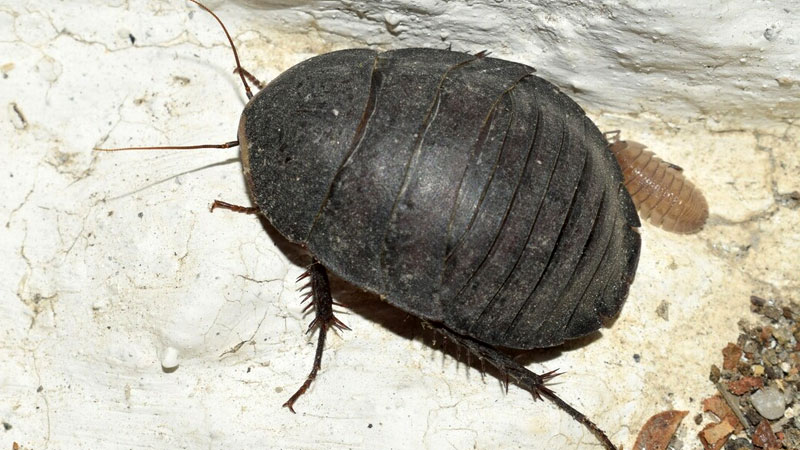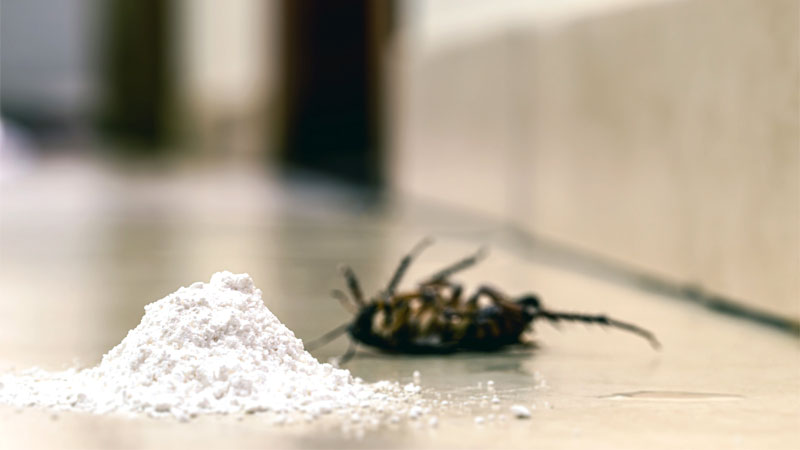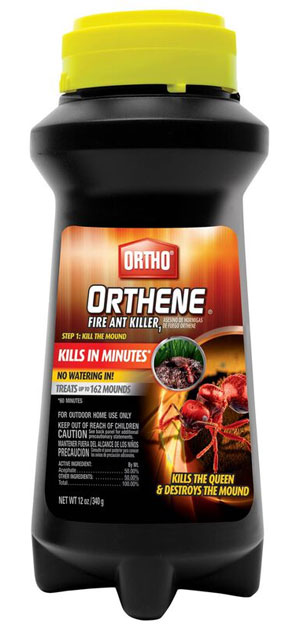What looks like a beetle, is scientifically named after a beetle, can sometimes fly, but isn’t a beetle?
It’s the Egyptian sand cockroach (Polyphaga aegyptiaca), a popular food for pet lizards.
While not a common pest in the US, escapees from breeders and pet owners can result in an infestation.
Let’s take a look at how to deal with these curious critters, then go back and review how to identify them and prevent escapees.
Getting Rid of Egyptian Cockroaches
Dealing with the Egyptian roach isn’t much different from removing other roaches.
In many cases, natural home remedies are preferable and even more effective than chemical means. This is because the roaches can’t adapt to them.
Thankfully, it’s rare for more than one or two of these pests to escape their breeding container, making it much easier to prevent a full infestation.
Natural Remedies
There are several natural remedies that can be effective in getting rid of Egyptian roaches.
These methods are both safe and eco-friendly, making them an excellent option for homeowners who want to avoid using harsh chemicals.
#1 – Diatomaceous Earth
One popular remedy is using diatomaceous earth. This natural powder, made from fossilized aquatic organisms, can be lightly spread around the areas where cockroaches tend to gather.
When the roaches crawl over the powder, it damages their exoskeleton, eventually causing them to dehydrate and die.
#2 – Boric Acid
Boric acid is another effective natural option for combating these pests.
Mixing equal parts of either boric acid or borax, flour, and sugar can create a bait that is lethal to cockroaches. Place the bait in areas where you’ve seen cockroach activity for the best results.
#3 – Essential Oils
Essential oils, such as peppermint, lavender, and eucalyptus, can also be used to deter cockroaches.
To use this method, mix several drops of your chosen essential oil with water in a spray bottle and mist the affected areas. Cockroaches are repelled by the odor, making them less likely to return.
Alternatively, you can use lemon juice or citrus-based cleaners when cleaning surfaces in your home. The scent of citrus is unpleasant to many bugs, discouraging them from invading your living space.
Note that relying too heavily on essential oils will allow bugs to slowly get used to the smell.
#4 – Glue Traps
A popular, non-toxic roach killer is the trusty glue trap. These can be in the form of fly strips or glue boards and kill through suffocation and/or starvation.
Simply lay them along the edges of walls or in places you’ve seen roach activity and they’ll do the rest.
Be warned, while non-toxic, these should still be kept away from children and pets unless you want to scrub the glue out of their hair/fur and possibly give a haircut.
#5 – A Clean Home
Finally, maintaining cleanliness and reducing clutter can help discourage roaches from taking up residence in your home.
Be sure to regularly clean kitchen surfaces, wash any dirty dishes, dispose of trash, and limit access to food sources, such as pet foods.
Note that while this species can thrive in much drier environments than German cockroaches or other common species, they still need a little moisture for their eggs to hatch.
It’s also important to remove any dead cockroaches quickly, as they sometimes release pheromones that will attract more pests as they die.
Chemical Solutions
Various chemical pesticides and insecticides can be used to eliminate or deter the presence of cockroaches.
There are several products available on the market, but choosing the right one is essential for its effectiveness.
Also, it’s important to switch between products and brands so the roaches are less likely to build a resistance.
#1 – Bait Traps
Cockroach bait traps are an effective way to kill off an infestation. You can place the bait in areas where you have seen the roaches, but be sure to keep it out of reach from kids and pets.
It’s important to follow the instructions on the roach bait carefully to ensure that it is used safely and effectively.
As long as there are no better food sources, they’ll eat the bate and even share it with each other before it kills them.
#2 – Pesticide Sprays
It’s important to choose a pesticide that is specifically labeled for use against cockroaches (we like Bengal Gold Roach Spray) and to follow the instructions carefully.
You should wear protective clothing and a mask while using the pesticide spray. Keep children and pets away from the treated area until it is safe to return.
It’s important to note that roach sprays may not completely eliminate the infestation, as they may not reach hiding spots.
Also, using the same pesticide too often can lead to superbugs. Therefore, it’s best to use these as spot treatments in conjunction with other methods instead of relying solely on them.
#3 – Roach Bombs
Roach bombs, also known as foggers, can be used as a last resort. It’s important to note that these products can be dangerous if not used properly.
Roach bombs release a fog of chemicals that can kill cockroaches, but they can also be harmful to humans and pets if inhaled or ingested. They’ll also leave a residue that needs to be cleaned from surfaces to prevent the risk of poisoning.
If you decide to use a roach bomb, follow the instructions carefully and make sure to leave the treated area immediately after activating the bomb.
Remove any food or food utensils, and turn off any pilot lights or gas appliances before using the roach bomb. It’s also important to ventilate the area thoroughly after the treatment is complete.
Getting to Know Egyptian Cockroaches
The Egyptian sand cockroach (also known as the Egyptian desert roach) is a type of cockroach native to the Mediterranean coast and east to the Caspian Sea.
They’ve been introduced to other parts of the world as a popular food for pet lizards.
Appearance
Polyphaga aegyptiaca is a sexually dimorphic species, meaning the males and females look very different.
Females are round with a solid shell, making them look a lot like scarab beetles. Meanwhile, the males have wings that stretch longer than their bodies and have the ability to fly.
They have a darker coloration compared to the American cockroach and Oriental cockroach, ranging from dark brown and gray to black.
They’re also on the smaller size, measuring only around 1/2 inch long excluding wings.
How Common Are Egyptian Roaches?
Thankfully, you’re not likely to run into this species in the US unless you have a pet lizard or know someone who does. They’re not native to the Americas and aren’t known to have achieved a foothold.
However, infestations have been known to occur when their breeding tank isn’t sealed properly. This is especially true of the males who can fly out when the lid is open.
In their native habitat, this species of cockroach prefers dry tropical climates with a source of water to lay their eggs near. Given the choice, they prefer the outdoors and home invasions are uncommon.
Prevention Methods
Because this species is used primarily as a food source for pets, you don’t have to worry about them entering your home from outside.
However, there are some simple preventative measures to keep in mind if you plan to purchase these critters to feed your pets.
#1 – Choose the Right Container
You’ll want a container with tall, smooth sides so adult roaches can’t climb out. A tall plastic container with tiny airholes or a small aquarium are great choices for keeping these bugs contained.
Airtight containers (with airholes poked into the lids) or containers that clip closed are also a good idea, as these are less likely to pop open if they get knocked over.
#2 – Choose the Right Location
You don’t want to keep the roach container in high-traffic areas where it can easily be bumped. A warm, dark spot is ideal for breeding purposes.
Remember that this species prefers drier climates, so you can place the container somewhere with lower humidity.
A closet or shelf near your lizard’s container is a great spot as there’s less risk of dropping the roach during transfer.
#3 – Use Caution When Transferring
Finally, it’s important to be careful when opening your container so the males don’t escape.
A good trick is to clip their wings before they reach adulthood using some small nail clippers or cuticle scissors. This will prevent them from being able to fly, although it’s important to check occasionally to ensure you didn’t miss any.
It’s also a good idea to use an aquarium net or small container to keep a roach contained while transferring it to your lizard tank.
If a roach escapes, capture it immediately or kill it. An escaped roach may attract other critters or lay eggs, resulting in an infestation.
- How to Identify Skunk Poop (With Pictures) - April 1, 2024
- You Really Don’t Need That Opossum Trap - January 4, 2024
- How to Set a Mouse Trap Without Getting Hurt - December 28, 2023



